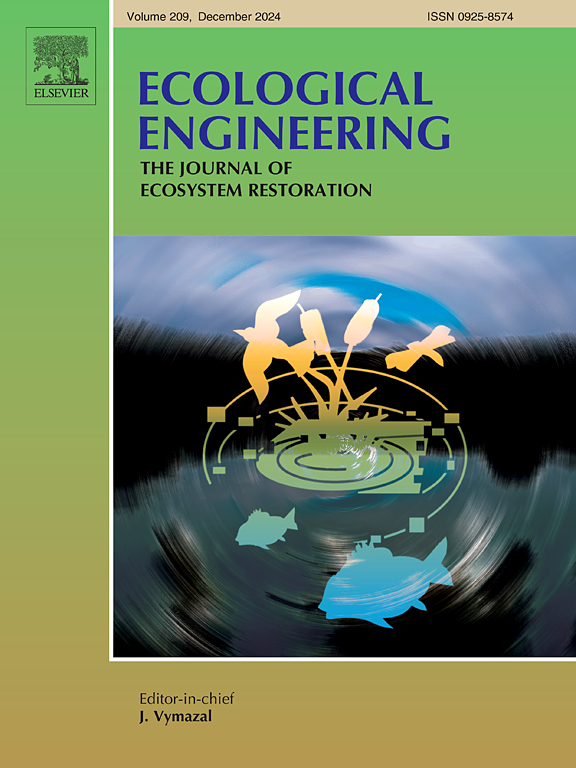褐藻在沿海基础设施的生物多样性模式和生物侵蚀中的作用:普利茅斯防波堤的启示
IF 3.9
2区 环境科学与生态学
Q1 ECOLOGY
引用次数: 0
摘要
本文章由计算机程序翻译,如有差异,请以英文原文为准。

The role of limpets in biodiversity patterns and bioerosion on coastal infrastructure: Insights from Plymouth Breakwater
The choice of materials used in coastal infrastructure not only influences colonization by marine life, but it can also influence the extent to which colonizing organisms modify the surface topography of the structure. This study examines the role of limpets as ecosystem engineers on the 180 year-old Plymouth Breakwater, a large artificial coastal structure composed of limestone, granite, and concrete. By comparing biodiversity patterns across these substrates, the research highlights how limpet bioerosion and grazing activities influence community structure and ecological succession. The study found that limestone pools, formed through differential erosion, support higher biodiversity and distinct functional groups compared to emergent granite habitats. On concrete blocks of varying ages, a clear successional pattern was observed: early colonization by green algae (< 2 yrs) was followed by the establishment of fucoids (2–3 yrs) and, subsequently, dense limpet populations that reduced algal cover (4–10 yrs). Over time, as the blocks aged and eroded (> 25 yrs), red algae became dominant, and limpet populations declined. This study highlights the importance of substrate type and erosion in shaping ecological communities on artificial coastal structures. The research contributes to a growing understanding of the complex interactions between biotic and abiotic factors in engineered marine environments, offering insights for the design and management of sustainable coastal infrastructure to support biodiversity.
求助全文
通过发布文献求助,成功后即可免费获取论文全文。
去求助
来源期刊

Ecological Engineering
环境科学-工程:环境
CiteScore
8.00
自引率
5.30%
发文量
293
审稿时长
57 days
期刊介绍:
Ecological engineering has been defined as the design of ecosystems for the mutual benefit of humans and nature. The journal is meant for ecologists who, because of their research interests or occupation, are involved in designing, monitoring, or restoring ecosystems, and can serve as a bridge between ecologists and engineers.
Specific topics covered in the journal include: habitat reconstruction; ecotechnology; synthetic ecology; bioengineering; restoration ecology; ecology conservation; ecosystem rehabilitation; stream and river restoration; reclamation ecology; non-renewable resource conservation. Descriptions of specific applications of ecological engineering are acceptable only when situated within context of adding novelty to current research and emphasizing ecosystem restoration. We do not accept purely descriptive reports on ecosystem structures (such as vegetation surveys), purely physical assessment of materials that can be used for ecological restoration, small-model studies carried out in the laboratory or greenhouse with artificial (waste)water or crop studies, or case studies on conventional wastewater treatment and eutrophication that do not offer an ecosystem restoration approach within the paper.
 求助内容:
求助内容: 应助结果提醒方式:
应助结果提醒方式:


